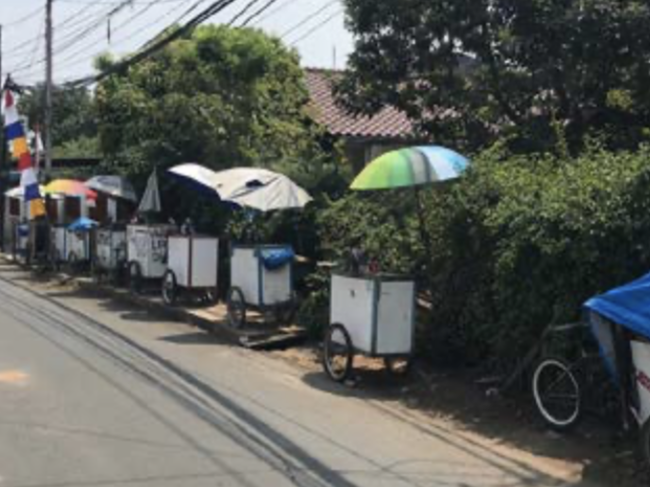Self-assembled Cities
The city, Jakarta, has developed many lifestyles to meet the need of residents, with the big systems of the city influencing its small systems. Street vendors of the private sector mirror how the supply-demand mechanism of the people in the city functions. There are all kinds of repairing services for the city’s residents, which provide them to repair their broken objects instead of replacing them with new ones. Mobile tailoring services on the street is regarded as a great example. These tailors, waiting and serving on the street, are always there when the residents have clothes, pants, or bags to be patched or fixed.
This project raises questions on how a city can be repaired and regenerated, furthermore, how do we patch up historical wounds or a collective memory of a city? Like a piece of historical memory engraved in the city, which cannot be erased, the blackened vestiges remain on the surfaces of the burned buildings, dwelling in the Jakarta Old Town. In the project, with social fields as the background, we discuss how, among others, economies, nations, and politics impact the faces of architecture
in a city, by interviewing a operator who design street mobile sewing machines, tailors working on the street, and experts in urban studies, collecting documentation and archive of architecture, and collaborating with street tailors to create a participatory performance. These ideas are inspired by actual events that happened in cities, and they are now reversed to shape the imaginations of cities. In short, we build the future, and we reproduce the past.
This project raises questions on how a city can be repaired and regenerated, furthermore, how do we patch up historical wounds or a collective memory of a city? Like a piece of historical memory engraved in the city, which cannot be erased, the blackened vestiges remain on the surfaces of the burned buildings, dwelling in the Jakarta Old Town. In the project, with social fields as the background, we discuss how, among others, economies, nations, and politics impact the faces of architecture
in a city, by interviewing a operator who design street mobile sewing machines, tailors working on the street, and experts in urban studies, collecting documentation and archive of architecture, and collaborating with street tailors to create a participatory performance. These ideas are inspired by actual events that happened in cities, and they are now reversed to shape the imaginations of cities. In short, we build the future, and we reproduce the past.
Biography
Hou, I-Ting born in Kaohsiung, Taiwan in 1979, currently live and work in Taipei. She received a degree from the Taipei National University of the Arts, and later obtained a MFA degree in plastic arts at the Tainan National University of the Arts. Combining embroidery with digital images and video are Hou’s main medium, her works express the possibilities of image through variable mediums. She has been profoundly explored the female labor condition under social and economic system from past to today. Her works often feature the human body in the changing days like today. Through her practice, She tries to expand the discussion of body field in a broader way.




